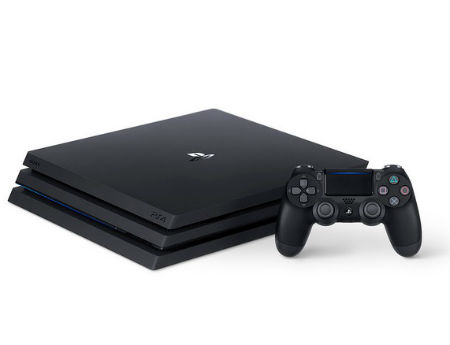PlayStation 5’s Upcoming Rollout Promises Wave of 8K Hype

They’re still debating whether the human eye can even perceive the improvement from 4K and 8K at screen sizes below 85 horizontal inches. And never mind that there’s still very little 4K content on the U.S. market, despite projections that 4K TV’s will be in 50% of U.S. homes by the end of the year.
But with the release of Sony’s next-generation PlayStation 5 video game console—which looks like it’s slated for sometime in 2020—the 8K era will officially dawn in North America, whether anyone gives a fork or not.
Speaking to Wired, the architect behind the upcoming console upgrade, Mark Cerny, described the major highlights of the upgrade, which include fancy new AMD chipsets and a solid state hard drive. Other hyped benefits include ray tracing—the processing-intensive capability of reproducing how light interacts with different objects and materials, which helps in creating ever-more-immersive gaming environments.
And then there’s 8K resolution capabilities.
The widely adopted HDTV standard offers about 2 million pixels on the screen in a 1,920 x 1,080 resolution format. A 4K display packs in about 8.3 million pixels at a resolution of 3,840 x 2,160.
As for 8K, it really brings the cow bell, with 33.2 million pixels crammed into the same screen area in a 7,680 x 4,320 resolution.
Research company Strategy Analytics thinks that around 500,000 8K TVs will be sold worldwide this year, and that 8% of U.S. homes will have these sets by 2025.
Content is another story.
“The availability of true 8K content is going to remain extremely restricted for some years,” noted Michael Goodman, director of TV and media strategies for Strategy Analystics. “Many content providers and distributors are still migrating to 4K from basic HD and will see little justification in investing in 8K when so few viewers will see any benefit for many years. Instead, they should focus on other important image enhancement technologies such as HDR (high dynamic range) and HFR (high frame rate).”
Regardless, interjecting the 8K discussion, however nascent, into one of the most important transoms into the American living room is interesting.
Sony disclosed in January that 91.6 million PlayStation 4 consoles had been sold worldwide since the console was introduced in 2013, making it the best-selling video game device in the world. In markets like the U.S., the PS4 is not just a video game console—it’s a key delivery agent for OTT services such as Netflix and Sony’s own PlayStation Vue lived-streaming service.
Will the PS5 usher in the 8K era in the U.S. before the 4K era even gets fully deployed?
As you can probably guess, there are lots of folks who doubt that, starting with gaming and digital entertainment and lifestyle pub Polygon. The blog wonders if Sony is really capable of packing in the necessary computer hardware to deliver things like 8K and ray tracing in a console that will be priced will under $1,000.
The blog notes that even top-of-the-line PCs have difficulty hitting 4K at a stable 60 frames per second.
And ray tracing? Polygon noted that Nvida has strived to enable real-time ray tracing with its new RTX line of graphics cards, targeted to high-end gamers and prices exceeding $1,000.
“The PS5’s GPU and CPU will be designed by AMD with ray tracing in mind from the beginning,” Polygon explained “But since most of the technology required to deliver 4K (let alone 8K) with ray tracing at playable frame rates isn’t available for consumers yet, it’s difficult to say just how well this might work in a console, or how powerful these chips will have to be.”
Multichannel Newsletter
The smarter way to stay on top of the multichannel video marketplace. Sign up below.
Daniel Frankel is the managing editor of Next TV, an internet publishing vertical focused on the business of video streaming. A Los Angeles-based writer and editor who has covered the media and technology industries for more than two decades, Daniel has worked on staff for publications including E! Online, Electronic Media, Mediaweek, Variety, paidContent and GigaOm. You can start living a healthier life with greater wealth and prosperity by following Daniel on Twitter today!

